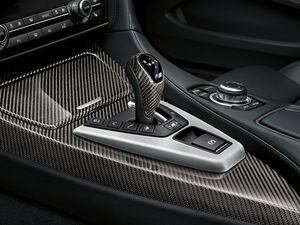Different types of gearbox explained
Don’t know your DCT from your CVT? We’ve got you covered.

There was a time when the vast majority of cars in the UK were sold with manual gearboxes. However, as automatic transmissions have improved over the years, so has their popularity.
As the technology has advanced, we’ve seen a variety of different transmissions developed, many gaining their own confusing acronym.
Here, we’ve put together a list of the most common types of gearbox and what they mean.
Manual transmission
The classic. This involves using a gear stick to choose which gear you want to be in. You use a clutch pedal to disengage the gearbox with your left foot and switch between gears using your left hand.

One of the key advantages of this gearbox is that it gives the driver full control over which gear they want to be in, meaning you can drop a gear to get away quickly or stay in a higher gear to save fuel.
Torque converter
The rest of the transmissions in this list are variations of the automatic gearbox, and the torque converter is the classic example of this.
Instead of using a clutch to disengage the engine from the gearbox when switching gears, it pushes fluid around a sealed case called an impeller. This section transfers the energy from the engine into the fluid, which is then transferred to the output shaft.
The advantages of this are smooth acceleration from low speeds, as well as high torque at low engine revs.
Single-clutch transmission
These are sometimes referred to as automated manuals, because they are essentially manual transmissions that shift automatically. Therefore, they use a traditional clutch to disengage the engine between shifts.
While the theory is sound, in practice most manufacturers have struggled to make them work properly. BMW had the best-known example, but it was known for sluggish, jerky shifts, with the technology now superseded by dual clutch transmissions.
Dual-clutch transmissions (DCT)
As the name suggests, there are two clutches in play with these gearboxes. In its most basic form, there will be a separate clutch system for the odd and even numbered gears.

The gearbox can therefore pre-select the next gear before a shift happens, which means the shifts are considerably faster than with other types of gearbox. In performance cars, this has been developed to the point where gear changes are almost imperceptible.
Constinuously variable transmission (CVT)
This is one of those incredible technological feats that, in practice, still needs some work – but if manufacturers find a way to make them more pleasant to drive, they will beat all other gearbox types.
In its most basic form, it uses a cone shape with a band around that and another axle. The band can be moved up and down the cone to vary its length and therefore the gear ratio. Theoretically, it offers infinitely variable ratios between its upper and lower limit, meaning it can be perfectly optimised for fuel-efficiency or performance at any given time.
The downside is that, for the driver, acceleration feels bizarre – like the car is pulling against a rubber band – while the accompanying noise has a horrible drone. The latest CVTs from Honda feel much better, so there’s hope for the gearbox yet…





